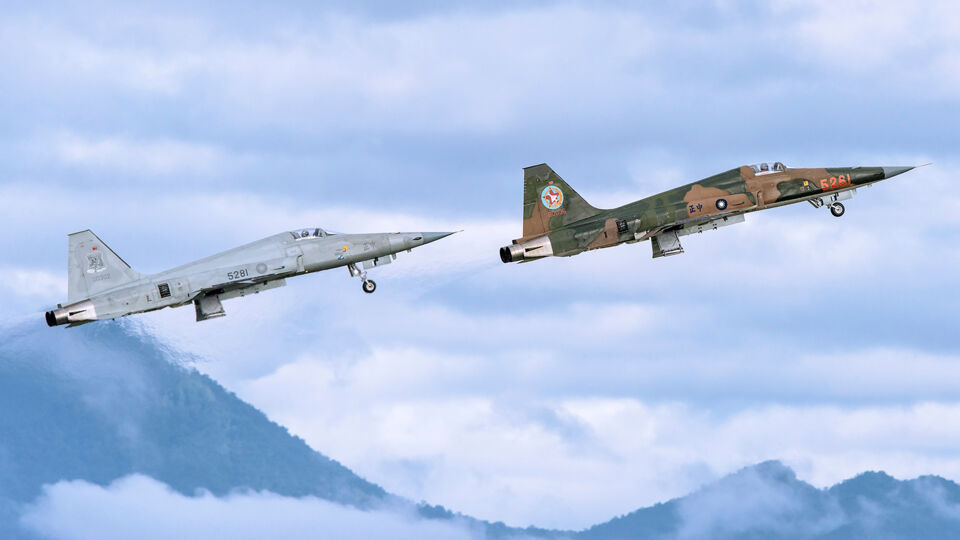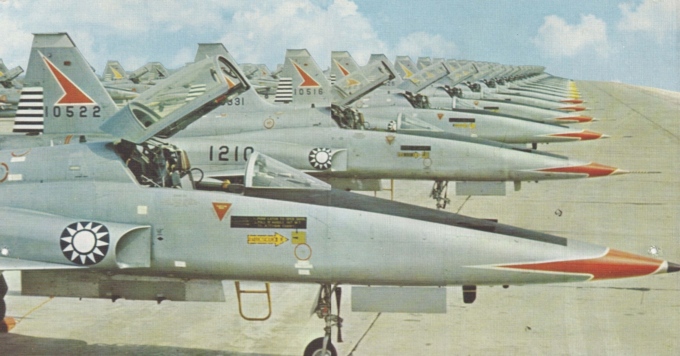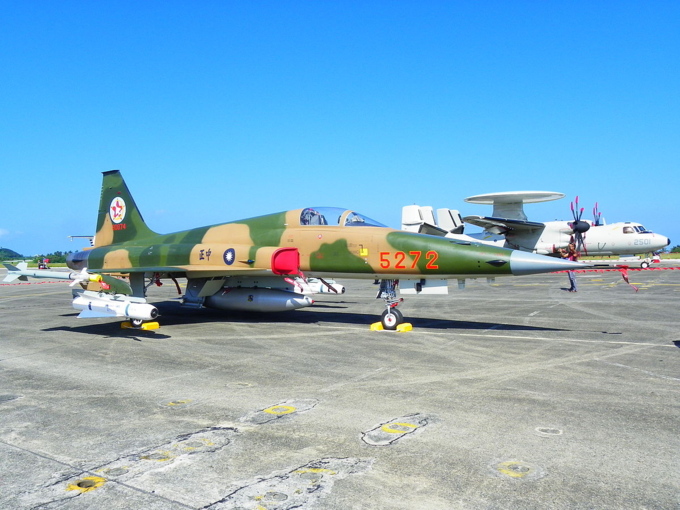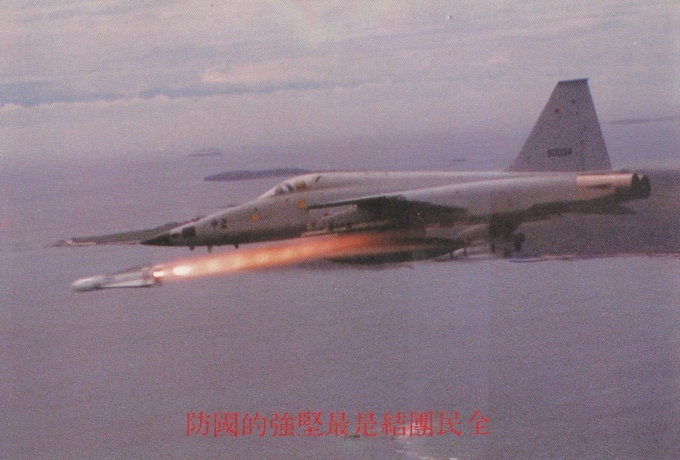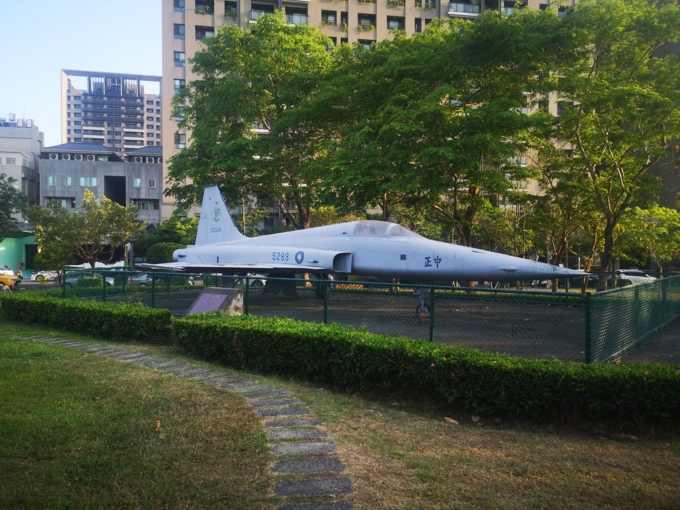As a supersonic fighter born in the late 1950s, the Northrop F-5 series
jet fighters were a popular choice for many countries, as well as being a
famous star in USAF’s Exercise Red Flag, where it performed well even
against 3rd generation fighters such as the F-14 Tomcat. Although the US Air
Force only used a limited number of F-5C “Skoshi Tigers” in the Vietnam
War, both the F-5A “Freedom Fighter” and F-5E “Tiger II” have been involved in many
wars and conflicts around the world, including service in the ROCAF.
“Freedom Fighters” and “Tigers” in Taiwan
In an effort to replace the outdated F-86F Sabre fighter jets, the ROCAF placed an order for 60 F-5A and B fighters to the United States, the first tranche of a total requirement for 115 aircraft. The 115 aircraft were aided through the Foreign Military Sales (FMS) and the Military Aid Program (MAP), while some sources claim that the total amount of F-5A was 72 with an additional batch of 11 F-5Bs.
The first batch of Freedom Fighters was delivered in 1964, which equipped three squadrons of the 1st Tactical Fighter Wing. Subsequently, a total of four squadrons were equipped with the F-5A/B fighters and the military aid program was codenamed “Yu Shan” (“玉山”, one of the main mountain ranges in Taiwan). Followed by the requirement for updating weaponry and equipment for the Republic of Vietnam Air Force, 48 of the ROCAF’s Freedom Fighters were to be leased to the Vietnamese ally and sent to Southeast Asia as quickly as possible.
During this period, air defense missions over the Taiwan Strait were mainly carried out by the US Air Force. The US Air Force drew two F-4C fighter squadrons from Kadena Air Force Base, and a total of 48 Phantom II fighters were stationed at Ching-Chuan-Kang Air Force Base in Taichung. In return for ROC’s aiding military equipment to the Republic of Vietnam, the ROCAF received 28 F-5E “Tiger II"s from Northrop in 1975, and it is believed that some of the F-5As transferred to South Vietnam were later returned to the ROCAF, even including an F-5C used by the USAF in Vietnam for evaluation. The F-4 Phantom II fighter squadrons and the supporting T-38 trainers were returned to Kadena Air Force Base.
The Domestic “Tiger” jets: Peace Tiger Program
On February 9, 1973, the ROC authorities and the US government reached an agreement for the co-production of 100 F-5E “Tiger II” fighter jets. This program was given the codename “Hu An” (“虎安”, Peace Tiger) and was to be undertaken jointly by Northrop and Aerospace Industrial Development Corporation of Taiwan (AIDC) (then a research institute of the ROCAF).
The first AIDC-built F-5E was rolled out on October 30, 1974, one day before the late President Chiang Kai-shek’s 88th birthday, and was thus christened “Chung Chen”, an alias of President Chiang. Production of all 100 aircraft was completed by November 1977.
Later, 208 more aircraft were added to the production run in five batches, from “Peace Tiger No. 2” through “Peace Tiger No. 6”. The complexity of the production work by AIDC also evolved in several phases. The whole “Peace Tiger” program was completed on December 9, 1986, when the final aircraft was rolled off the production line.
Image credit: 玄史生 (Wikimedia) / CC BY-SA 3.0
Peace Tiger No. 6 stands out among these programs, for it was the only batch approved after the US authorities led by President Carter established diplomatic relations with Communist China in 1979. The succeeding Reagan administration denied Taiwan’s request to purchase the more advanced F-16 and F-20 in early 1982, for fear of angering mainland China.
More than denying future military aid, the US government signed the 817 Communiqué with China on August 17, 1982, pledging to gradually reduce military sales and aid to Taiwan. However, in an effort to assure the security of the Taiwan Strait and curb the offensive attempts of mainland China, the Reagan administration submitted the proposed sale of 60 F-5E/F to the Republic of China to Congress after two days. As a result, the US $240-million sale was made of the licence production of 30 F-5E and 30 F-5F and was later named as Peace Tiger 6.
The US-Sino August 17th Joint Communiqué, also known as “中美就解決美國向台出售武器問題的公告” (China-US Announcement on Solving the Issue of US Arms Sales to Taiwan), aimed to cease the arms sales and any form of military aid that the US provides to the Republic of China.
At its peak in 1990, the ROC Air Force had a total of 5 Tactical Fighter Wings (the 401 Wing in Taoyuan, the 455 Wing in Chiayi, the 443 Wing in Tainan, the 828 Wing in Hualien, and the 737 Wing in Taitung), a total of 15 squadrons were equipped with F-5E/F fighters. A portion of F-5E/Fs (such as some aircraft of the 443 Wing stationed in Tainan) were able to use AGM-65 “Mavericks” air-to-surface missiles and 500 and 2,000 lb “Paving Stone” laser-guided bombs in the later stages of their service.
End of the Era of the “Freedom Fighter”
After nearly 30 years of active service, the F-5A fighter was officially decommissioned from the Republic of China Air Force on June 30, 1987, while the F-5B fighter was decommissioned on June 30, 1996. However, most of these fighters had already been converted into unmanned drones or disassembled to provide spare parts for the succeeding fighter jets.
Since the heat of the first Strait Crisis had passed, the “Tigers” didn’t have the chance to be involved in combat actions; but two of these jets defected to mainland China in the 1980s and they were among the very last cross-strait defects. These jets were also involved in 50 crashes with 52 deaths. After three crashes between October 2020 (5261; engine flameout) and March 2021 (5286 and 5287; mid-air collision), ROCAF decided to decommission their fleet of remaining F-5s in Taitung by 2025, replacing them with the new T-BE5A Brave Eagle.
